Cristina Filipe, Contemporary Jewellery in Portugal: From the Avant-Garde of the 1960s to the Early 21st Century. Stuttgart: Arnoldsche Art Publishers, 2019.
Published in 2019 in both a Portuguese and an English version, this book offers a historical and critical approach to contemporary jewelry in Portugal. With a very clear organization, the work consists of two sections dedicated to “Concepts and Framework” and “Artists and Contexts”—the latter organized by decade—followed by an extensive photographic archive and a timeline of the period from 1963 to 2004, the dates that mark the chronological limits of the underlying research.
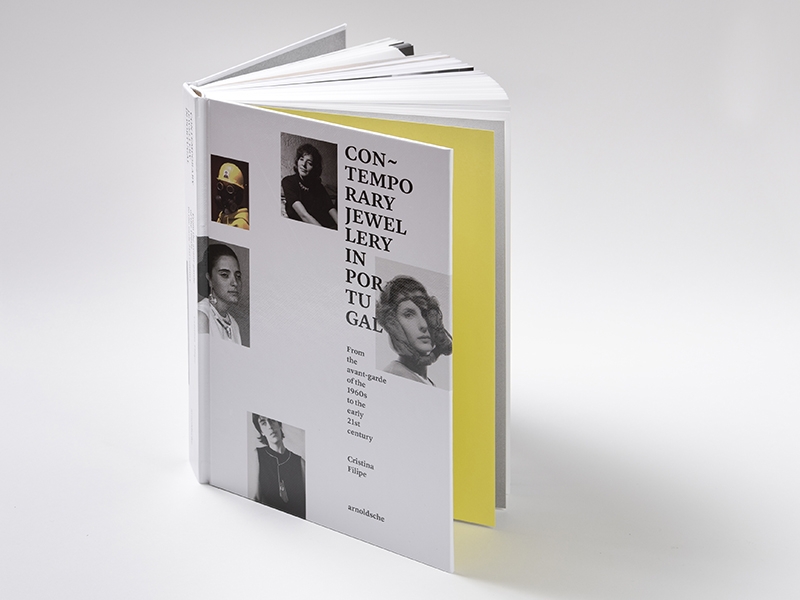
Related: Katja Toporski Interviews Cristina Filipe
Related: The Portuguese Jewelry Scene
Related: AJF’s Interview with Susan Beech
Despite having long since overcome the dichotomy between the major and minor arts, and with the history of art in recent decades having undergone a significant expansion in its object of study, jewelry, like other fine craft practices, continues to be relegated to a secondary place in general art history. It was only residually contemplated in the chapter on modern and contemporary design by Rui Afonso Santos in História da Arte Portuguesa, a book on the history of Portuguese art that was coordinated by art historian Paulo Pereira in 1995. As also happens with the digital arts or graphic design—which I cite only as examples—it is the practitioners themselves who have best reflected on their fields and theorized and produced discourses about them. They have done so successfully, since they are the ones who have the terminology and the internal knowledge of the specificities, constraints, and speculations inherent to the means of creation in question. Without aiming to replace the historiographical discourse, these reflections have provided critical contributions to the knowledge of contemporary artistic practices. And this is precisely what Cristina Filipe, an artist herself, achieved with her in-depth doctoral project, defended in 2018, Trajetórias da Joalharia Contemporânea: Artistas e Contextos (1963–2004) (Trajectories of Contemporary Jewellery: Artists and Contexts [1963–2004]), the project that eventually resulted in this book.
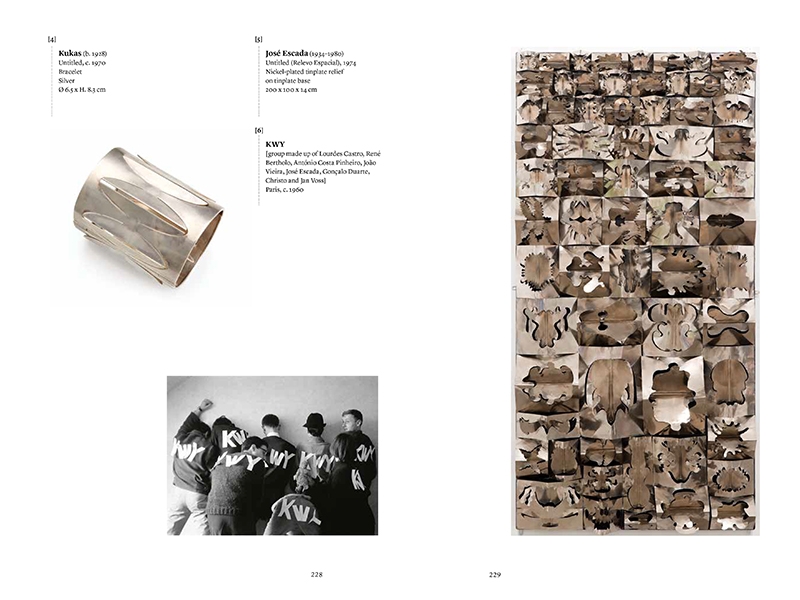
Filipe was born in Lisbon, where she lives and works as an artist, teacher, and researcher. She studied at Ar.Co – Centro de Arte e Comunicação Visual, the Gerrit Rietveld Academie, the Royal College of Art, the Surrey Institute of Art and Design (where she finished her master’s degree in 2001), and Escola das Artes da Universidade Católica Portuguesa, where she completed her PhD in 2018. She was awarded a scholarship by the Calouste Gulbenkian Foundation and the Foundation for Science and Technology. She is a co-founder of PIN – Associação Portuguesa de Joalharia Contemporânea and has been its president since 2004. She has exhibited her work since 1986. Among other prizes, she has been awarded the Jungent Gestalt Prize (1989) and 1st Prize in the Young Creators Competition (1990).

With an orientation that examines not only the artists and works themselves, but all the components of the artistic system, including the various spheres of artistic production, mediation, and reception, the author provides a comprehensive portrait of contemporary jewelry in Portugal, including its institutional and extra-institutional context. In this way, museums, galleries and exhibitions, catalogs and other publications, schools and training centers, competitions, symposia and meetings, artist trips, and study periods abroad are all covered and explored.
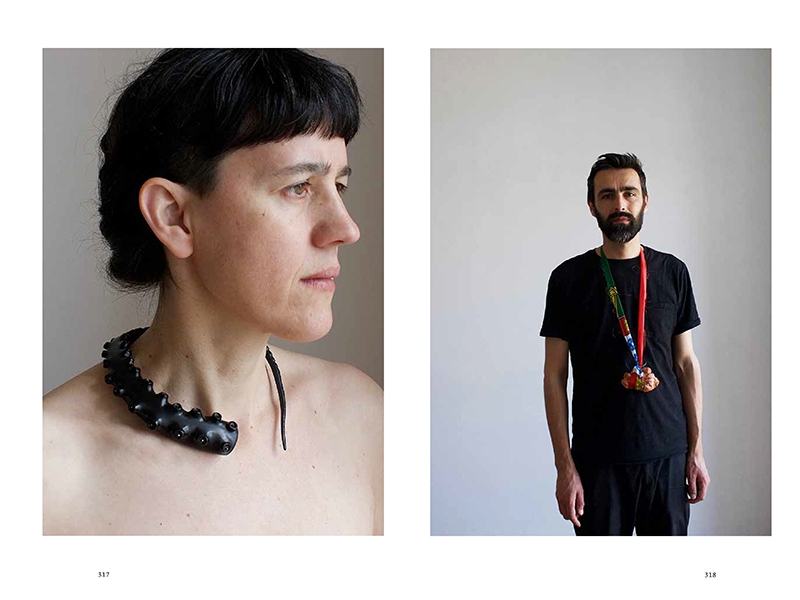
It’s important to note, however, that this analysis of the evolution of jewelry between the 1960s and the early 21st century is produced with a methodology that integrates jewelry into the course of mainstream contemporary art in Portugal, seeking convergence over divergence and thus contradicting the center/margin hierarchy that still dominates in many approaches to these themes. The understanding of jewelry is not based on essentialist criteria of the medium—which would lead, once again, to the marginalization of this practice—but on the conceptualization, references, and problematization presented by the artists themselves. In other words, jewelry allows us to understand how contemporary art is established and how it intersects with other territories of concern and influence.
On the other hand, by revealing the jewelry made by fine artists, the artistic biography of the authors undergoes an important revision. By placing jewelry in the context of the radical renewal of the artistic panorama from the 1960s onward, in terms of categories, materials, concepts, problems, and proposals, it is the knowledge of art in Portugal that is thus updated and deepened.

Other relevant contributions to art history should be highlighted. The 32 pages of the timeline constitute a new and indispensable source of information for all those interested in this field of study. The photographic archive included is exceptional, not only because of the quantity of images reproduced (190), but because of the performativity on which they are based. Through the use of models from the field of Portuguese culture and not from the world of fashion, a gallery of poses, experiences, and involvements is constructed that allows us to understand the jewelry on the body and in its own circumstances. While an international audience may miss some of the references, the Portuguese public will find a set of elective affinities that combine emotion and knowledge. The same could be said of the photographs of the author’s father that open and close the volume. An award-winning athlete, he is shown wearing his medals. In addition to classifying the medal as an item of jewelry, these photos insinuate the metaphor of a race undertaken by the author.

Throughout this research project, Filipe interviewed dozens of Portuguese artists, and a publication with this material is currently in preparation. This book is eagerly awaited and will become an essential resource for jewelry research, a field in which catalogs, scarce monographs on educational institutions, and a few academic master’s and doctoral works continue to be the predominant sources.
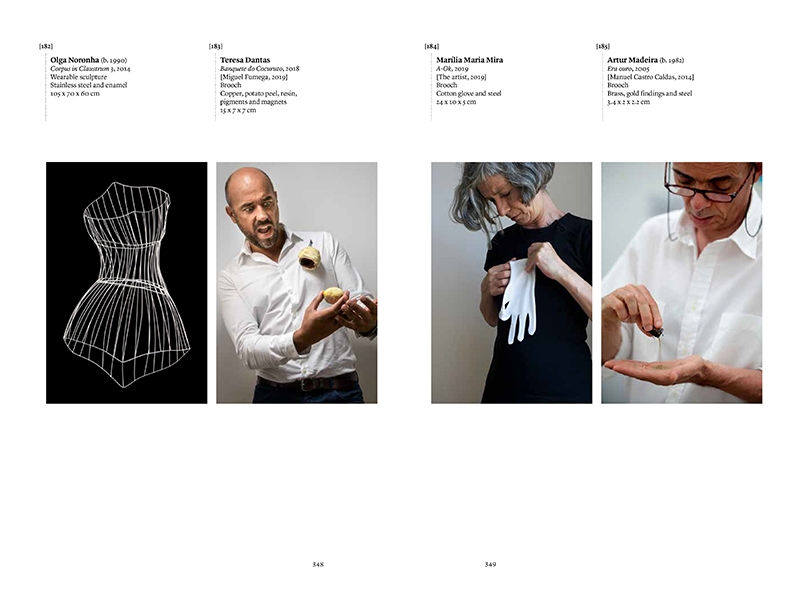
The book was published thanks to a Susan Beech Mid-Career Grant awarded to the author by Art Jewelry Forum. In parallel to this publication, the Calouste Gulbenkian Museum also held the exhibition Contemporary Jewellery in Portugal as part of the 2019 “Summer Guests” program. This exhibit was curated by Cristina Filipe, and established a chronological, conceptual, formal, and symbolic approach between the contemporary jewelry shown and works from the Calouste Gulbenkian Foundation’s Modern Collection and the so-called Founder’s Collection held by the same institution. The book, and the exhibition, constitute a key moment in the historiography of contemporary art in Portugal.
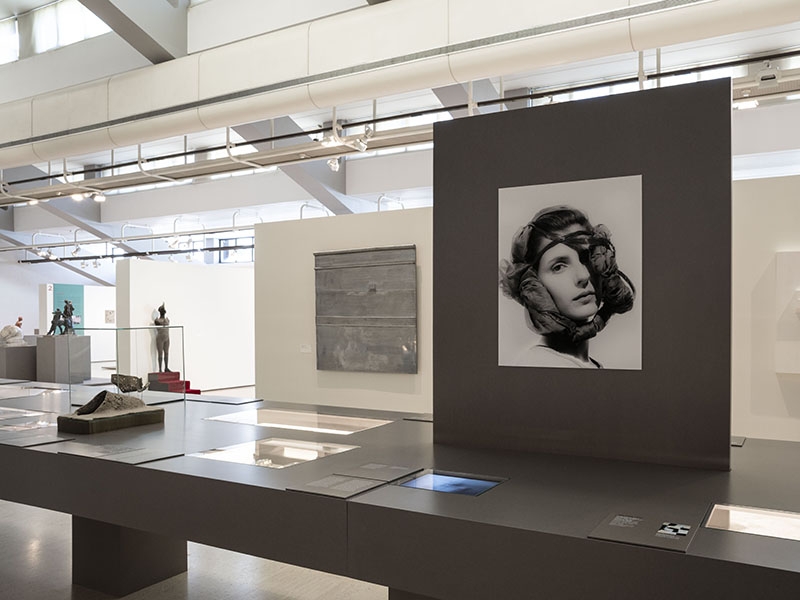
In Portuguese
Cristina Filipe, Joalharia Contemporânea em Portugal: Das vanguardas de 1960 ao início do século XXI. Lisboa: MUDE Museu do Design e da Moda, Coleção Francisco Capelo, 2019.
Editado em 2019 em duas versões—portuguesa e inglesa—apresentado em Lisboa, Porto e Berlim, este livro propõe uma abordagem histórica e crítica da joalharia contemporânea em Portugal. Com uma organização de grande clareza, a obra compõe-se de duas partes dedicadas a “Conceitos e Enquadramento” e “Artistas e Contextos”—esta optando por um tratamento por décadas—seguidas de um extenso documentário fotográfico e de uma cronologia do período 1963 a 2004, datas que assinalam os limites cronológicos da investigação subjacente.
Tendo há muito sido ultrapassada a dicotomia entre artes maiores e menores e tendo a história da arte nas últimas décadas conhecido um alargamento significativo do seu objecto de estudo, a joalharia, como outras práticas artísticas, continua a ter um lugar secundário nas histórias da arte gerais e foi residualmente contemplada no capítulo sobre o design moderno e contemporâneo, na História da Arte Portuguesa, dirigida por Paulo Pereira, em 1995. Tal como acontece—e cito apenas a título de exemplo—nas artes digitais ou no design gráfico, são os próprios artistas quem tem vindo a reflectir, a teorizar e a produzir discurso sobre elas. Têm-no feito com êxito, uma vez que esses actores possuem a terminologia, o conhecimento interno das especificidades, dos condicionalismos e das especulações próprias dos meios de criação. Sem visar a substituição do discurso historiográfico, constituem contributos importantíssimos para o conhecimento das práticas artísticas contemporâneas. Foi o que fez Cristina Filipe, artista, que realizou uma profunda investigação de doutoramento, defendida em 2018, com o trabalho Trajetórias da Joalharia Contemporânea: Artistas e Contextos (1963–2004) que viria a ter como resultado este livro.
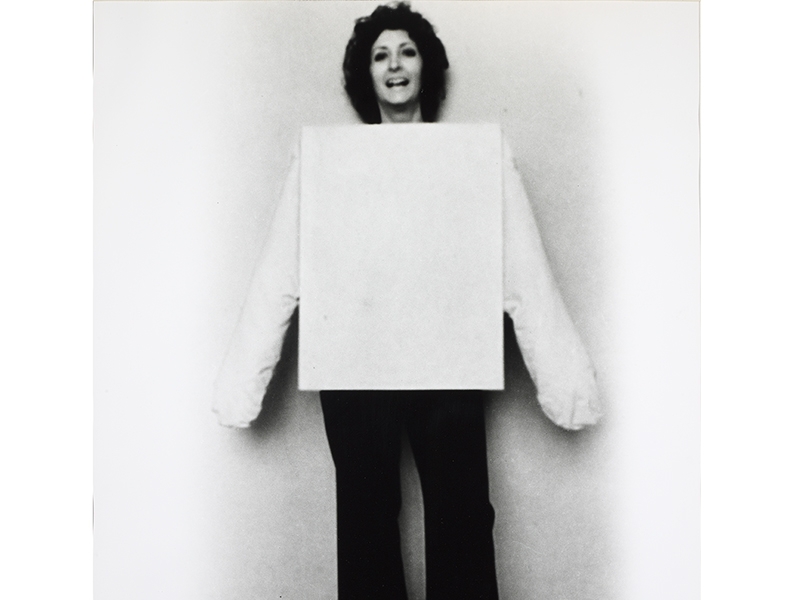
Cristina Filipe é natural de Lisboa, onde vive e trabalha. Desenvolve actividade como artista, professora e investigadora. Estudou no Ar.Co – Centro de Arte e Comunicação Visual, na Academia Gerrit Rietveld, no Royal College of Art, no Surrey Institute of Art and Design, onde terminou mestrado em 2001, e na Escola das Artes da Universidade Católica Portuguesa, onde concluiu doutoramento em 2018. Foi Bolseira da Fundação Calouste Gulbenkian e da Fundação para a Ciência e Tecnologia. É co-fundadora da PIN – Associação Portuguesa de Joalharia Contemporânea e sua Presidente desde a fundação em 2004. Expõe o seu trabalho desde 1986. Ganhou o Jungent Gestalt Prize (1989) e o I Prémio no Concurso Jovens Criadores (1990) entre outros.
Com uma orientação que atenta, não apenas aos artistas e às obras, mas a todos os componentes do sistema artístico, incluindo os fenómenos das esferas da produção, da mediação e da recepção artísticas, a autora faz um completíssimo retrato da joalharia contemporânea em Portugal que inclui o seu lugar institucional e extra-institucional. São, deste modo, enunciados e caracterizados museus, galerias e exposições; catálogos e outras publicações; escolas e centros de formação; concursos, simpósios e encontros; viagens dos artistas e estadias fora de Portugal.
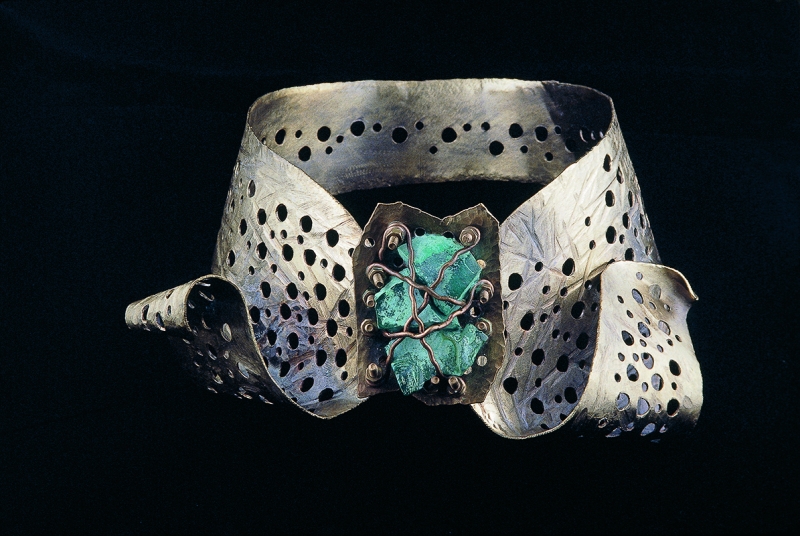
Importa salientar, no entanto, que esta análise da evolução da joalharia entre os anos 60 e os primeiros anos do século XXI, é feita através de metodologia que integra a joalharia no percurso da arte contemporânea em Portugal, que procura mais convergências do que divergências e contraria, desta forma, a hierarquia centro/margens que pesa ainda sobre a abordagem destes temas. O entendimento da joalharia é feito, não com base no critério essencialista do meio—o que levaria, uma vez mais, à marginalização desta prática—mas com base na conceptualização, nas referências e na problematização apresentadas pelos artistas. Dito de outro modo, a joalharia permite ler a forma como a arte contemporânea se estabelece e as intersecções com outros territórios de preocupação e influência.
Por outro lado, ao revelar a joalharia realizada por artistas plásticos, é a biografia artística dos autores que sofre uma revisão importante; ao situar a joalharia no contexto da renovação radical do panorama artístico dos anos 60 em diante, em termos de categorias, materiais, conceitos, problemáticas e propostas, é o conhecimento da arte em Portugal que se actualiza e aprofunda.
Outros contributos para a história da arte merecem ser citados. As 32 páginas de cronologia constituem um instrumento de trabalho, doravante incontornável, para todos os que se interessarem por este campo de estudo. Do documentário fotográfico incluído, diremos que é excepcional, não apenas pela quantidade de imagens reproduzidas (190), mas pela performatividade em que assenta. Através da utilização de modelos oriundo do campo da cultura portuguesa e não do universo da moda, constrói-se uma galeria de poses, experiências e envolvimentos que permitem entender a joia no corpo e a joalharia nas suas circunstâncias. E, se para um público internacional, as alusões não serão certamente apreendidas, para o público português elas evidenciam um quadro de afinidades electivas que cruzam emoção e conhecimento. O mesmo se poderia dizer das fotografias do pai da autora, como atleta medalhado, que abrem e encerram o volume e que, para lá de citarem a medalha como joia, insinuam a metáfora desta corrida de fundo que a autora empreendeu.
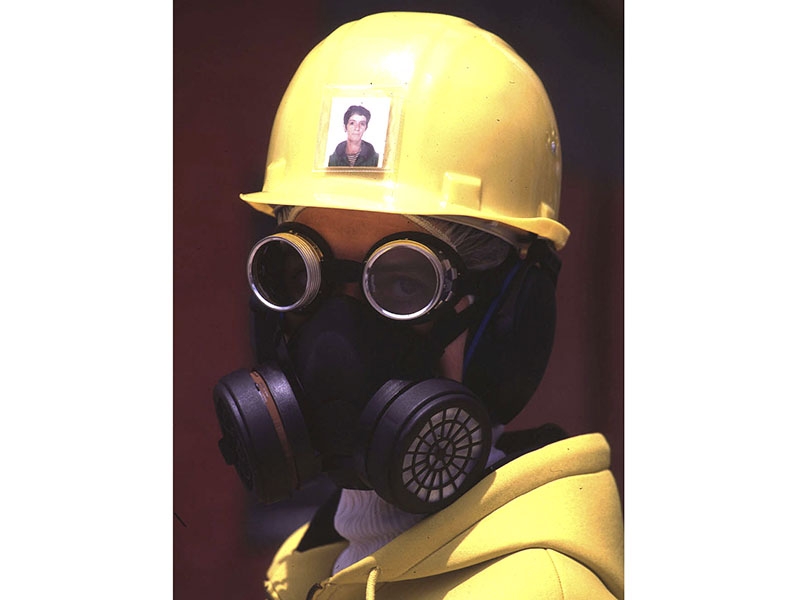
Ao longo desta investigação, Cristina Filipe fez dezenas de entrevistas a artistas portugueses, cuja publicação está já a ser preparada. Aguarda-se com expectativa esse livro que passará a configurar uma fonte imprescindível para a pesquisa em joalharia, para a qual os catálogos, escassas monografias sobre instituições de ensino e alguns trabalhos académicos de mestrado e doutoramento continuam a ser os materiais dominantes.
O livro foi editado graças à bolsa Susan Beech Mid-Career Artist Grant concedida à autora pelo Art Jewelry Forum, sedeado nos Estados Unidos da América. Paralelamente à edição, teve lugar no Museu Calouste Gulbenkian, no mesmo ano de 2019, a exposição “Joalharia Contemporânea em Portugal”, no âmbito do programa “Convidados de Verão”, com curadoria de Cristina Filipe, que estabelecia uma aproximação cronológica, conceptual, formal ou simbólica entre as joias mostradas, a Colecção Moderna da Fundação e a designada Colecção do Fundador. O livro e a exposição, constituem um momento de grande relevância para a historiografia da arte contemporânea em Portugal.
Laura Castro é investigadora no Centro de Investigação em Ciência e Tecnologia das Artes (CITAR), da Escola das Artes – Universidade Católica Portuguesa. Professora Auxiliar na mesma instituição. Investigadora, curadora e ensaísta em arte moderna e contemporânea; arte pública; arte e paisagem; arte e género; exposições de arte e museologia. Membro da APHA – Associação Portuguesa de Historiadores de Arte e da AICA – Associação Internacional de Críticos de Arte.





